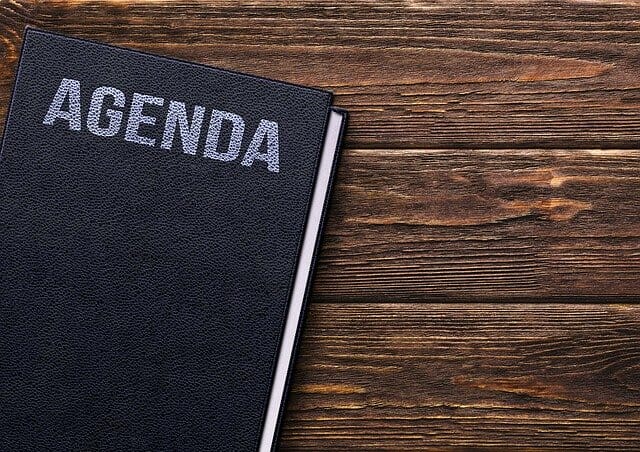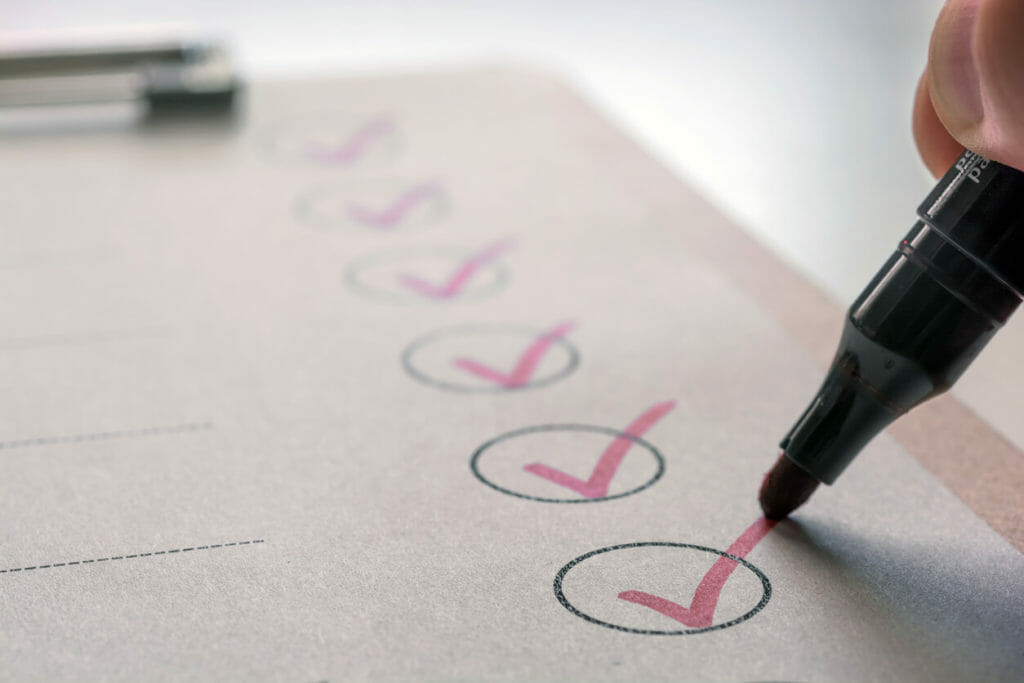No one wants to attend a boring meeting. People want to take part in productive meetings that lead to accountability and meaningful action. And yet, too many communities find that their meetings drag on longer than they should. People avoid coming because the meetings end up taking up too much of their time. In the following guide, we’re going to show you how to create a meeting agenda that will help you move things along and make your meetings exciting, engaging and productive.
Click here to Download our HOA meeting agenda template
How to create an effective HOA board meeting agenda
There are plenty of ways to make HOA board meetings more effective. One of them is to acknowledge the purpose of the meeting by preparing an agenda beforehand. The agenda should include all topics the board will address, and allocate a time period for each item.
Preparation
The preparation of the agenda is usually a demonstration of the partnership between a property manager and the board. It’s important for these two parties to prepare and present the agenda together. That way, everyone remains on the same page and there are no surprises come the day of the meeting.
Here are a few guidelines to follow when preparing a meeting agenda:
Set your goals. What do you want out of the agenda? What are your expectations for the meeting? It is very important to set goals and objectives for your HOA meetings. If you have already set certain goals, then you’re already a step ahead.
Try to focus on four to six items. Two to three might be a little light, seven or eight makes it look like it’s going to be a long meeting. Four to six means that the line items are relevant and meaningful.
Use verbs. Action words like discuss, review and analyze show that there should be an action or end-goal at the end of the line-item discussion.
Prioritize action items. When preparing your line items ask yourself – what are you agreeing to and is it going to take the HOA to where it needs to go? The key is to remember that these action items create commitment and accountability. It holds both parties accountable for what you’re agreeing to accomplish.
How to structure your agenda?
A meeting agenda is a tool designed to manage meeting proceedings. But there is more than one type of agenda. Take a look at the options. You may need different agendas for different meetings.
Time-based agenda
A time-based agenda is when every item on the agenda is given a specific time period. This helps the board to figure out how much time will be devoted to each item, and prioritize the most important issues accordingly.
A time-based agenda makes it a lot easier to cut off a discussion that isn’t productive or relevant. It comes in handy if the community has been having trouble with lengthy meetings.
When meetings begin and end on time, they usually have better attendance. Time-based agendas really help boards and property managers take control of time in a meeting.
Outcome-based agenda
The next type of agenda to consider is an outcome-based agenda. This is where you tell the people what kind of outcome you’re expecting, whether it’s an action item or a board vote. These agendas allow members to prepare ahead of time and come up with productive questions that may help to drive the meeting forward.
An outcome-based agenda can be used in conjunction with a time-based agenda to let people know what the action items are and how much time will be given to each item.
Priority agenda
A priority-based agenda requires you to place the most important item at the top of the agenda. If you want a really robust discussion for a particular item, place it at the top of the agenda so that board members can address that issue before they get bored or distracted.
Consent agenda
This is an agenda that packages any documents that may be required if a meeting item requires a vote. Whether it’s approving meeting minutes or looking at committee reports, a consent agenda puts everything together in one comprehensive package. Then, at the meeting, there is a motion to approve the consent agenda in order to move things along swiftly.
This type of agenda can also help to shorten meetings so that you don’t have long discussions about issues that are easy to approve. It leaves you with more time to do things that can only be accomplished when meeting as a group.
The one caveat is that board members have to be willing to read the material beforehand, so you don’t have people voting on things that they’ve never thought about. If you cram too much into your consent agenda, it may be overwhelming and unappealing. Also, any board member can request that an item be pulled out of the consent agenda in order to discuss it separately.
When should you flip the agenda?
If you notice that owners keep looking at their watches, or their eyes are beginning to glaze over, it’s okay to alter the agenda. The board doesn’t want to create a situation where owners make decisions based on what will get them out of the meeting in the least amount of time.
In these cases, it is appropriate to flip the agenda and place important items on top. Let items that could be moved to the next board meeting fall to the bottom of the agenda.
Distribution of the agenda
To prepare members for the meeting, it’s important to distribute the agenda at least a week prior so that they can read through the items and formulate questions. Your governing documents may also have rules about how far in advance agendas must be distributed. Giving owners time to review this information allows them to manage their schedules accordingly and bring informed questions to the table.
If possible, publish the agenda on a central portal or location, such as a members only website or a property management platform that comes with a document storage space. This feature will allow you to organize and store all of your association’s information for easy access. That way, people don’t have to go searching through their inbox every time they need to reference an agenda item.
How to keep members interested
Once you get owners at the meeting, it will be easier to keep their attention by giving them actual work to do.
Similarly, owners don’t want to come to different meetings only to hear the same issues circulating again. It’s important to push for the implementation of action items from previous meetings. To this end, it might be helpful to place reports on previous action items so that progress can be tracked and owners feel as though they do make a difference when they attend meetings.
Conclusion
A board meeting is intended to be a culmination of various steps. As such, the board must consider a number of items before the actual meeting, which will be included in the agenda. This helps educate attendees, and prepares the board for issues that will be discussed.
An agenda makes it easier to control the outcome of a meeting, and you can structure and customize it in a way that serves your purpose. With the exception of new business or anything that didn’t come up until after the agenda was created, the actual meeting is the end of a process, not the beginning.
Download Template
Download our free Meeting Agenda template



